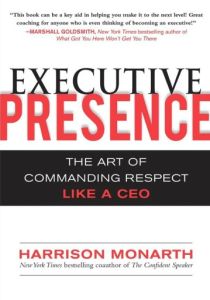Join getAbstract to access the summary!

Join getAbstract to access the summary!
Harrison Monarth
Executive Presence
The Art of Commanding Respect Like a CEO
McGraw-Hill, 2009
What's inside?
Gain the power and influence of the people in the C-suite by radiating an “executive presence.”
Recommendation
Why is the lion king of the jungle? The reasons, says business consultant and executive coach Harrison Monarth, are his “impressive mane” and “even more impressive roar.” Though other creatures may be smarter or even bigger, the lion has a special blend of true power and “an image and related behavior” that convey that power. In today’s business jungle, image matters, too. If you want to rise to the top of your firm, whether you are a lion or a lioness, you must craft and maintain an “executive presence” by combining superior communication skills with the ability to “read” people accurately and influence their perceptions. Explaining these techniques and more, Monarth’s ambitious work is dense with information and strives to cover a broad range of topics, some complex enough to warrant their own books. getAbstract recommends Monarth’s comprehensive advice to professionals who want to win the lion’s share of influence and power at their firms.
Summary
About the Author
Harrison Monarth is co-author of The Confident Speaker and founder and president of the GuruMaker School of Professional Speaking, an international consulting firm.

















Comment on this summary